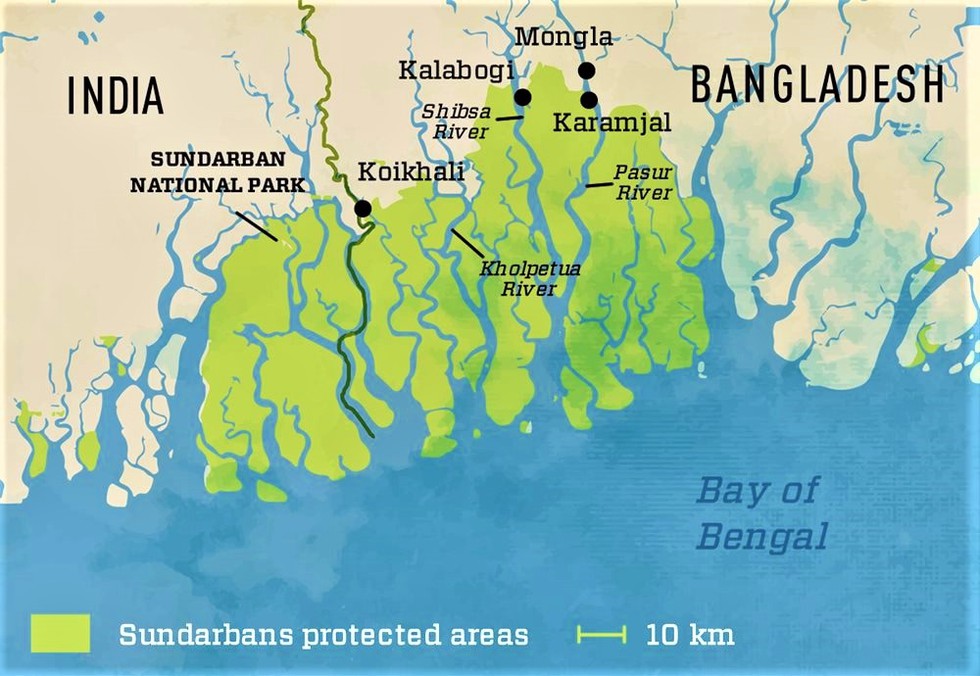About:
- The Sundarbans comprises hundreds of islands and a network of rivers, tributaries and creeks in the delta of the Ganga and the Brahmaputra at the mouth of the Bay of Bengal in India and Bangladesh.
- The Indian Sundarbans constitutes over 60% of the country’s total mangrove forest area.
- It is the 27th Ramsar Site in India, and with an area of 4,23,000 hectares is now the largest protected wetland in the country.
Criteria’s met for Ramsar recognition:
- It met 4 of the 9 criteria required for the status of ‘Wetland of International Importance’ — presence of rare species and threatened ecological communities, biological diversity, significant and representative fish and fish spawning ground and migration path.
- The Indian Sundarbans, also a UNESCO world heritage site, is home to the Royal Bengal Tiger.
- It is also home to rare and globally threatened species, such as the critically endangered northern river terrapin (Batagur baska), the endangered Irrawaddy dolphin (Orcaella brevirostris), and the vulnerable fishing cat (Prionailurus viverrinus).
- Two of the world’s four horseshoe crab species, and 8 of India’s 12 species of kingfisher are also found here.
- It is also home to 2,626 faunal species and 90% of the country’s mangrove varieties.
Threats faced by it:
- Over four million people live on the northern and north-western periphery of the Indian Sundarbans, putting pressure on the ecosystem.
- The Ramsar Information Sheet lists fishing and harvesting of aquatic resources as a “high impact” actual threat to the wetland.
- The other threats are from dredging, oil and gas drilling, logging and wood harvesting, hunting and collecting terrestrial animals.
- Salinity has been categorised as a medium and tourism as a low impact actual threat in the region.
- Along with anthropogenic pressures, it is also vulnerable to climate change.
